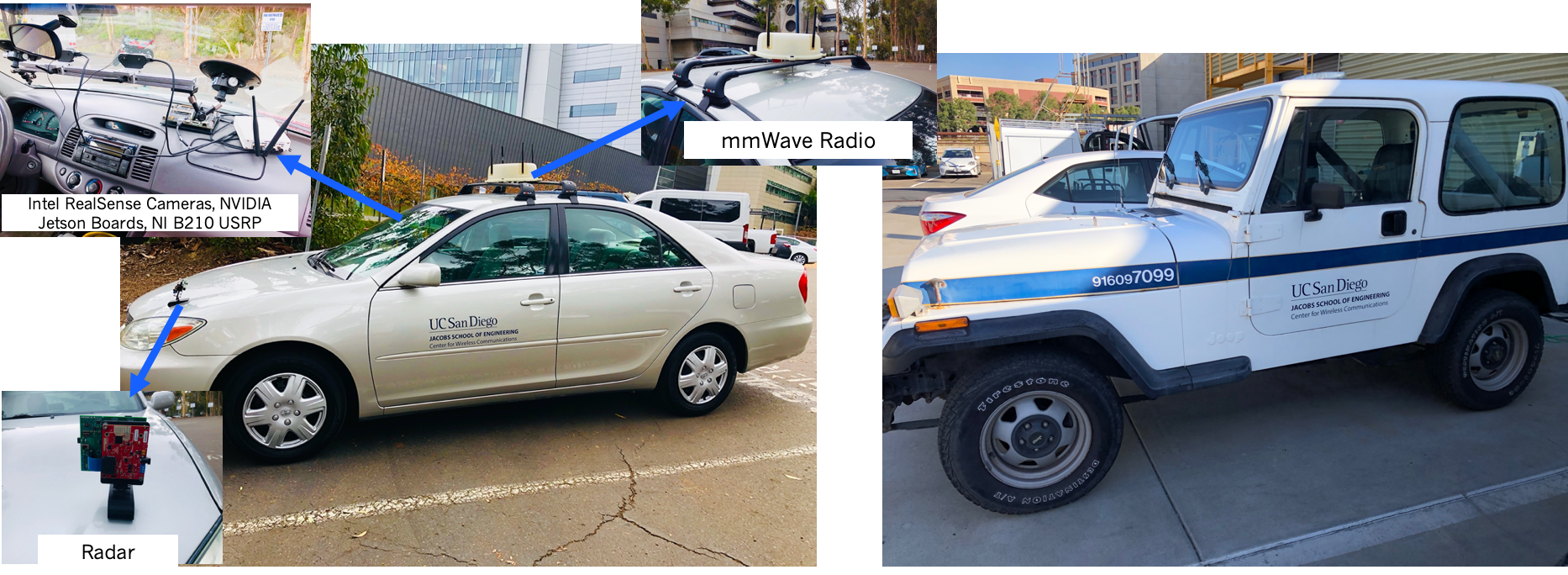Vehicular Testbed
Project Description
We are developing an experimental testbed to explore hybrid vehicular-to-everything (V2X) communication and computing systems. The testbed consists of 3 small-cell base stations, deployed on rooftops on campus and connected to a core-network server. Two experimental vehicles are instrumented with hybrid wireless communication technologies including 4G/5G radios e.g., USRP B210, N310 etc., mmWave radios and also WiFi radios mounted on the top rack of the car or inside. The vehicles are also equipped with multiple sensors, e.g., multi-stereo cameras with depth sensors, multiple radars, in-vehicle camera, GPS IMU etc. To support the data acquisition from the vehicular sensors and any local computations, Vehicular Local Computing (VLC) units are placed inside the vehicles. The VLC units also run the protocol stack for the communication technologies. Each base station also comprises of multiple software radios to support the hybrid communication technologies and VEC nodes for computation fusion tasks. The software radios are programmable from physical layer signal processing all the way up to mobile application layer, thus enabling full-stack experimental research in V2X communication. Integrating programmable core-network stack as well as the radio hardware, the testbed will allow researchers to investigate prominent 5G features (e.g., low-latency networking, directional millimeter-wave communication, software-defined mobile networking, integrated access and backhaul) well before their deployment, especially for V2X use cases.
We plan to incorporate C-V2X technologies from Qualcomm for communications between vehicles the RSUs. The testbed will enable (a) real-world data collection for training the AI models for algorithms for the connected and autonomous vehicles, and (b) evaluation of the performance of the developed algorithms using real road latency computation and bandwidth needs of real multiple vehicles and road users.

